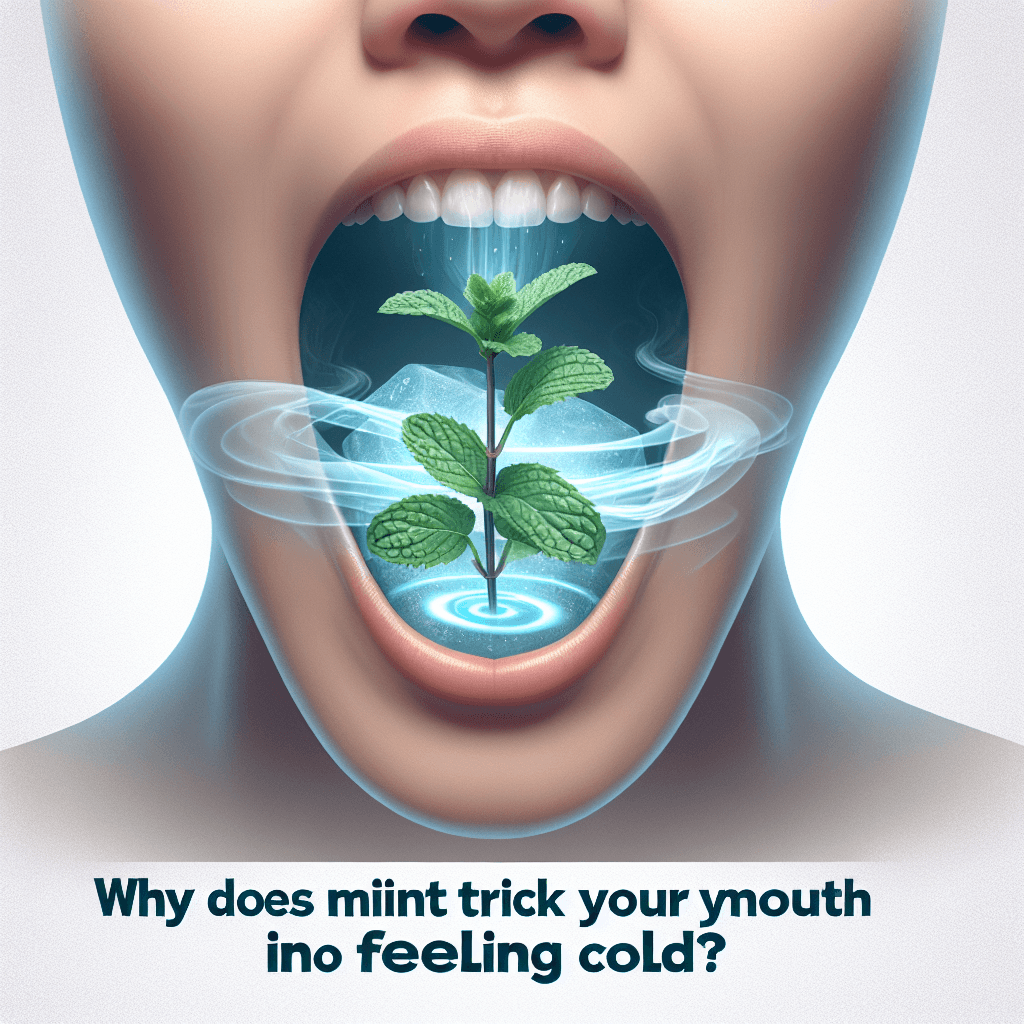The Cool Illusion: Why Does Mint Trick Your Mouth into Feeling Cold
Ever wondered why mint feels refreshingly cold, even when it's at room temperature? Discover the fascinating trick mint plays on your brain's temperature sensors.


Too Long; Didn't Read
Mint doesn't actually lower the temperature in your mouth. It contains a compound called menthol that tricks your cold-sensitive nerve receptors into sending a 'cold' signal to your brain.
The Cool Illusion: Why Does Mint Trick Your Mouth into Feeling Cold?
Ever popped a piece of mint gum or brushed your teeth and felt that rush of invigorating coolness? It's a familiar sensation, often described as refreshing or even slightly tingly. But have you ever stopped to wonder why mint has this effect? After all, mint candy isn't stored in the freezer, and your toothpaste isn't actually lowering the temperature inside your mouth. This intriguing sensation is a fascinating trick played on our sensory system. This post delves into the science behind why mint tricks your mouth into feeling cold, exploring the specific chemical interactions that create this cool illusion.
Meet Menthol: Mint's Cooling Agent
The primary culprit behind mint's signature chill is a chemical compound called menthol. Menthol is a naturally occurring organic compound primarily obtained from the oils of peppermint, corn mint, and other mint plants. It's widely used in:
- Confectionery (gum, mints)
- Oral hygiene products (toothpaste, mouthwash)
- Over-the-counter remedies (cough drops, topical pain relievers)
While we associate it strongly with mint, it's this specific compound, menthol, that holds the key to the cooling sensation.
The Body's Temperature Sensor: TRPM8
Our bodies are equipped with sophisticated systems to detect changes in the environment, including temperature. Nerve cells in our skin and mucous membranes (like the lining of our mouth) contain specialized proteins called receptor channels. These act like tiny biological sensors.
For sensing cold, a crucial player is a receptor channel known as Transient Receptor Potential Melastatin 8 (TRPM8). Think of TRPM8 as your mouth's dedicated cold detector.
Normally, TRPM8 is activated by actual drops in temperature. When the temperature in your mouth dips below a certain threshold (around 25-28°C or 77-82°F), these TRPM8 receptors change shape. This change allows calcium ions to flow into the nerve cell, triggering an electrical signal. This signal travels along the nerve pathway to the brain, which interprets it simply as: "COLD!"
Menthol's Molecular Trickery
Here's where the magic happens: Menthol has the unique ability to bind directly to the TRPM8 receptor. Crucially, menthol activates TRPM8 in the exact same way that physical cold does, even when there's no actual temperature drop.
Imagine the TRPM8 receptor is like a lock that opens when the correct key is inserted.
- Key 1: Actual cold temperatures.
- Key 2: The menthol molecule.
When menthol comes into contact with the nerve endings in your mouth, it fits into the TRPM8 receptor 'lock'. This binding causes the receptor channel to open, allowing calcium ions to rush in and generating that nerve signal. Your brain receives this signal and, following its programming, interprets it as "cold," even though the physical temperature inside your mouth hasn't changed significantly.
It's a clever bit of biochemical mimicry – menthol essentially hijacks the pathway normally reserved for sensing genuine cold. This is why the sensation feels so authentic.
Beyond the Chill: Other Sensory Tricks
This mechanism isn't unique to cold sensations. A similar process explains why chili peppers feel hot. Capsaicin, the active compound in chilies, binds to a different receptor called TRPV1, which normally detects heat and pain. Capsaicin activates TRPV1, sending a "hot" signal to the brain, regardless of the actual temperature.
Understanding menthol and TRPM8 highlights the complex interplay between chemistry and our sensory perception. It reveals that our experience of temperature isn't just about physical thermometers; it's about specific molecular interactions activating dedicated neural pathways.
Conclusion: A Cool Chemical Illusion
So, the next time you enjoy that refreshing blast from a mint, remember the fascinating science at play. Mint doesn't magically lower the temperature in your mouth. Instead, the menthol compound expertly tricks your TRPM8 cold receptors into sending a "cold" signal to your brain. It's a harmless, often pleasant, sensory illusion rooted in molecular biology. This understanding not only demystifies a common experience but also offers a glimpse into the intricate ways our bodies sense and interpret the world around us, one molecule at a time.


